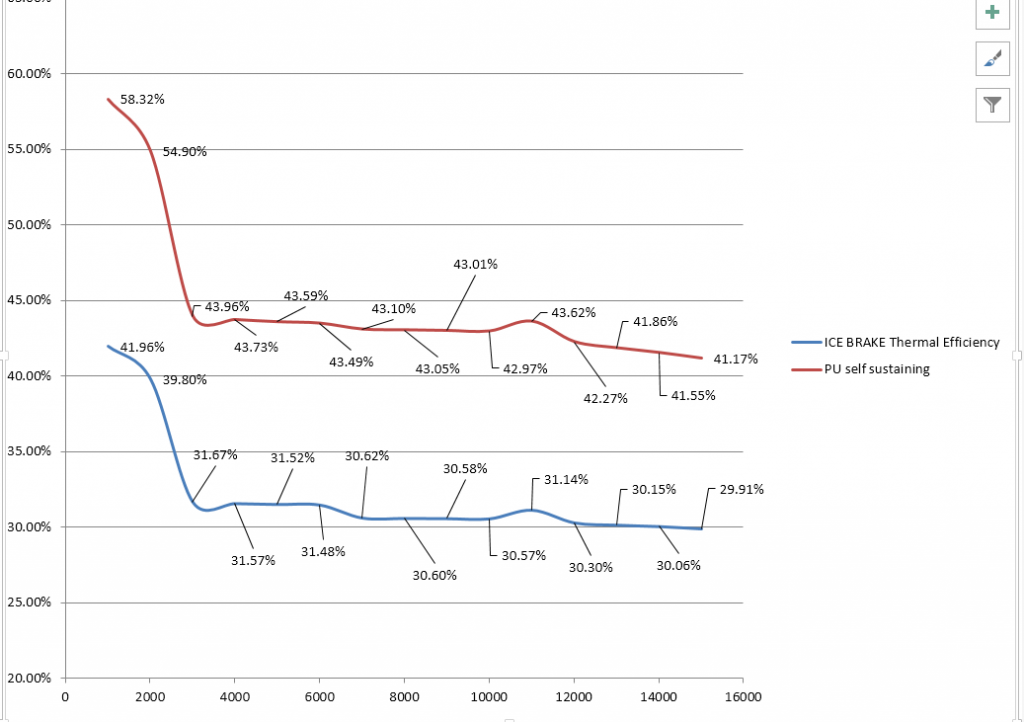No it is not. Besides, the heated fuel improved BSFC by only 2% so TE would still have been 31.5% without fuel heating.ringo wrote:Are you being serious? I don't think you are looking at certain details. The Honda engine had preheated fuel. That is against the rules.
- Add 26 years of engine development - things have probably improved a bit since then.Maybe they have, maybe the haven't. No evidence.

A turbo engine with DI can use higher compression or more boost than without DI. There are other advantages, particularly stratified charge which enables leaner mixtures for higher TE.- Add DI. We know DI and stratified charge will help thermal efficiencyyes, by me increasing compression ratios that are not typical of turbo charged engines.
I didn't think you did this - because you called it "KERS".- Add turbo-compounding. The only reason for TC is to improve TE - and it works!I did this. Why do you think i have not? The MGUH sends power to the KERS which drives the flywheel.
You should call things by their proper names - not whatever you want to call it. We can't understand your posts when you refer to things by the wrong name. KERS is "Kinetic Energy Recovery System" (regenerative braking).MGUH/KERS whatever you want to call it, it is not really turbo compunding in a classical sense, because it doesn't have a mechanical link to the flywheel.
Mechanical link, Electrical link what's the difference. Does a Diesel-Electric locomotive not have a transmission?
OK, now I understand a little better. If you change the legend of your graph from "ICE brake thermal efficiency" to "Piston Engine BTE" it makes more sense.PU self sustaining, is when the MGUH power drives the KERS? MGUH? through the energy management unit, without any supplemental power from the battery. This is the power output that the PU can theoretically run over the race distance without drawing from energy stored in the battery. The power unit can be considered a true engine under this condition.
The red line is in the right area - 40%+, the blue line is too low - for 2 reasons.
1. State-of-the-art piston engines are better than that. Prius 38.5%, 26 years old Honda 32.2%
2. There is not that much surplus power available in the exhaust. At 3 bar back-pressure there is 125 kW, at 4 bar back-pressure there is 177 kW and the compressor takes all but 45-47 kW of that.



